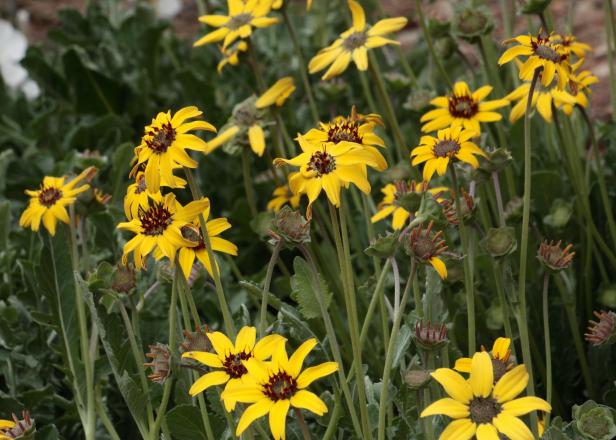Native Wildflowers for Low-Water Gardens

Native Wildflowers for Low-Water Gardens: Beauty Meets Sustainability
Gardening is a joy, but it can be a challenge in areas where water is scarce. Fortunately, there's a solution that's both beautiful and eco-friendly: native wildflowers for low-water gardens. These resilient blooms offer a vibrant display without guzzling precious resources. Let's dive into the world of water-wise gardening and explore how native plants can transform your outdoor space.
The Magic of Drought-Resistant Wildflowers
Imagine a garden that thrives with minimal watering, attracts local wildlife, and is stunningly beautiful. Sounds like a dream? It's not! Drought-resistant wildflowers make this a reality. These tough plants have adapted to survive in dry conditions, making them perfect for low-maintenance gardens.
Why Choose Native Plants?
Native plants are the superheroes of water-wise gardening. They're perfectly adapted to your region's climate, soil, and rainfall patterns. By choosing native wildflowers, you're not just saving water—you're also supporting local biodiversity. Birds, bees, and butterflies will flock to your garden, turning it into a lively ecosystem.
Top Picks: Native Wildflowers for Low-Water Gardens
Blanket Flower (Gaillardia)
Blanket flowers are like a vibrant, living quilt for your garden. With their showy red, yellow, and orange blooms, they're a magnet for pollinators. Plus, they're incredibly drought-tolerant once established.
Black-Eyed Susan (Rudbeckia hirta)
This classic wildflower is a stunner, with its golden petals and dark center. Black-Eyed Susans are tough as nails and can thrive in dry conditions. They also attract a variety of beneficial insects.
Purple Coneflower (Echinacea purpurea)
Purple coneflowers are a must-have for any low-water garden. Their striking purple blooms are a beacon for bees and butterflies. Plus, they're known for their medicinal properties.
California Poppy (Eschscholzia californica)
If you're in the West, consider the California poppy. This cheerful orange flower is drought-tolerant and adds a bright pop of color to your garden. It's also the state flower of California.
Lavender (Lavandula)
Lavender isn't just beautiful and fragrant—it's also incredibly tough. This drought-resistant plant thrives in full sun and well-drained soil. Plus, bees love it!
Designing Your Water-Wise Garden
Creating a low-maintenance garden isn't just about plant choice. It's also about design. Group plants with similar water needs together. This way, you can water efficiently and minimize waste.
Also, consider the layout of your garden. Placing taller plants in the back and shorter ones in the front creates a pleasing visual effect. It also ensures all your plants get the sun they need.
Preparing Your Soil
Before planting, it's crucial to prepare your soil. Most native wildflowers prefer well-drained soil. If your soil is heavy or clay-like, consider adding compost or other organic matter to improve drainage.
Planting and Caring for Your Wildflowers
Planting native wildflowers is a breeze. Most can be sown directly into the soil or transplanted as seedlings. Once established, they require minimal care. Water them deeply but infrequently to encourage deep root growth.
Mulching: Your Garden's Best Friend
Mulching is a game-changer for low-maintenance gardens. A layer of organic mulch helps retain soil moisture, suppresses weeds, and regulates soil temperature. It's like giving your garden a cozy blanket.
The Benefits of Eco-Friendly Landscaping
Eco-friendly landscaping isn't just about saving water. It's about creating a garden that works with nature, not against it. By choosing native plants, you're supporting local ecosystems and reducing the need for harmful pesticides and fertilizers.
Plus, eco-friendly gardens are low-maintenance. Less watering, less weeding, and less fussing mean more time to enjoy your beautiful outdoor space.
Beyond the Garden: Supporting Native Plants
Want to do more to support native plants? Consider getting involved with organizations like the National Wildlife Federation. They provide resources and opportunities to help preserve native plant habitats.
Conclusion
Creating a garden filled with native wildflowers for low-water gardens is a win-win. You get a gorgeous, low-maintenance outdoor space, and the environment gets a helping hand. So, why wait? Start planning your water-wise garden today!
FAQs
Q: Are native wildflowers hard to grow?
A: Not at all! Once established, native wildflowers are incredibly resilient. They're adapted to your region's conditions, so they require minimal care.
Q: How often should I water my drought-resistant wildflowers?
A: Once established, drought-resistant wildflowers need minimal watering. A good rule of thumb is to water deeply but infrequently.
Q: Will native wildflowers attract pests?
A: Native wildflowers attract beneficial insects like bees and butterflies. They're less likely to attract pests than non-native plants. Plus, they support local bird populations, which help control pests naturally.
Q: Can I grow native wildflowers in pots?
A: Yes! Many native wildflowers do well in pots. Just make sure your pots have good drainage, as most wildflowers prefer well-drained soil.
Q: Where can I buy native wildflower seeds?
A: Many nurseries and online retailers sell native wildflower seeds. You can also check with local native plant societies or conservation organizations. They often have seed sales to support their work.
0 Response to " Native Wildflowers for Low-Water Gardens"
Post a Comment